Social Media Metrics: The Ultimate Guide for 2024 [Updated]
You don't have to be a professional social media manager to grow your business on social. Here are the top social media metrics you should start tracking today!
Updated November 6, 2024

Social media is one of the most powerful marketing channels of 2024. It's direct, immediate, enables a two-way conversation with your audience, and (for the most part) it's free. As of December 2023, there are more than 4.45 billion social media users in the world, spending an average of 2.5 hours each day on various social platforms.
If you want to tap into the opportunity available on your social media channels, you need to do it strategically. To be strategic, you need to focus on the numbers. This is precisely why it's so important to know which social media marketing metrics to follow.
What are social metrics, how to follow them, what are the best tools to use, and how to use data to your advantage?
Keep reading and find out more.
(Source)
Understanding the importance of social media metrics
Knowing what metrics to follow is essential, no matter the social network.
Moving further into the digital age, businesses must keep up with the sophisticated tools available to measure their social media marketing efforts. Social media marketers know this best: you can't just post a bunch of links on Facebook, see how many likes they get, and call that a social strategy.
You need to know how to optimally harness social media to feed into your marketing goals, whether it's building brand awareness, collecting social proof, boosting conversions, and more. And for that to happen, you need to know, with surgical precision, which metrics to follow. It will help you:
- Discern how well you're doing with your social media efforts
- Understand if your message is reaching the intended audience
- Ensure brand cohesiveness and visibility
- Get a clear understanding of your target audience's likes, dislikes, and preferences
Tracking the right numbers can make the difference between being the next social media success star and getting buried under an ocean of random, bland, AI-generated posts.
How social media metrics can improve audience engagement
Measuring your social media efforts is a powerful way to understand and therefore improve audience engagement. These numbers provide clear guidelines on what kind of content resonates with the audience, when are prime times for posting, and what is the best posting frequency.
By tailoring your social media strategy based on these guidelines, you'll not only maximize visibility but also creating content that's more likely to be shared, liked, and commented on. A higher engagement rate points to a more invested audience. And an invested audience is an audience that spreads the word, buys from you, and helps you grow. This also lends to improved audience growth rate and awareness metrics across social media networks.
(Source)
Exploring the different types of social media metrics
Understanding various social media metrics will empower you to make strategic decisions. Here are some of the most important numbers to follow when you run a social media operation for a business:
Engagement metrics: likes, shares, comments, and reactions
Engagement metrics paint a picture of how your potential customer base is interacting with your content on social media platforms. Behind every like, share, comment, or reaction, a user was captivated enough by your content to engage with it. They stopped from their endless scroll to give you a few seconds of their time – a gift that's more precious than ever.
These metrics can show what type of content resonates with your audience, allowing you to tailor your future posts better. Engagement metrics aren’t just vanity statistics. They contribute to the overall visibility of your posts. Users engaging with your posts increase the likelihood of your content being shown to a larger audience, and thus to more potential customers.
Reach metrics: impressions and reach
Reach metrics offer insights into the potential visibility of your post. They help quantify the size of your audience. "Impressions" refers to the total times your content was displayed on someone’s timeline, while "reach" is the number of unique users who saw your post.
These two metrics provide valuable data on the scale of your content's visibility. The insights derived from this can prove instrumental in crafting your social media strategy, enabling you to identify peak posting times and measure audience growth.
Conversion metrics: click-through rate, conversion rate, and cost per conversion
The ultimate goal of most social media campaigns is not merely garnering likes or shares on individual posts, but converting engagements into quantifiable results. This is where conversion metrics come in. They keep track of the users' journey from viewing your post to taking a desired action, depending on your social media goals. This can be signing up for a newsletter, buying a product, or downloading a resource.
This triad of click-through rate (CTR), conversion rate (CR), and cost per conversion helps you measure the success of your marketing efforts, providing the return on investment (ROI) vital for any business.
(Source)
Customer metrics: customer satisfaction score & net promoter score
Beyond likes, shares, and conversions, social media is a powerful tool for monitoring customer sentiment. The customer satisfaction score (CSAT) and net promoter score (NPS) receive direct feedback from your users about their experience with your brand.
CSAT measures customers' immediate satisfaction with your product or service, while NPS helps gauge their overall experience and likelihood of recommending your brand to others. Monitoring and working on these metrics will help improve customer satisfaction and result in organic growth through word-of-mouth referrals.
Pro tip! Want to hit the nail on the head with your social media metrics? Hire a professional social media content freelancer to create the best content and copy for your socials. Contact Mayple and allow us to match you with the best expert for your specific needs.
Top tools for tracking social media metrics in 2024
Every click, like, share, and comment on your social media posts reveals something valuable. Social media analytics tools capture these intricate details and help you analyze them to more effectively reach your target audience on user-friendly analytics dashboards. They're like ingenious detectives, unraveling the secrets hidden within social media platforms' vast networks and presenting them in a form you can use to be more effective marketers.
Think Google Analytics for social metrics! Some leading social media management players in 2024 are:
- Sprout Social
- Hootsuite
- Brandwatch
- Agorapulse
- Buzzsumo
- Buffer
- Zoho Social
| Tool | Notable features | Pricing range & trial |
|---|---|---|
| Sprout Social | Engagement, publishing, analytics, social listening, influencer marketing, employee advocacy, AI and social media automation | $249 to $499/ month, custom pricing available; free 30-day trial |
| Hootsuite | Social media management, content scheduling, analytics, social listening, team collaboration | $99/month to $249/month, custom pricing available; free 30-day trial (or you can skip the trial and save 60% on yearly package) |
| Brandwatch | Social media listening, analytics, influencer marketing, crisis management, consumer research | Pricing available upon request |
| Agorapulse | Social media management, content scheduling, analytics, social listening, team collaboration | Paid plans range from $49/month to $119/month, custom pricing available; free 30-day trial |
| Buzzsumo | Content discovery, influencer identification, content analysis, competitor research | Paid plans range from $199/month to $999+/month |
| Buffer | Social media management, content scheduling, analytics, team collaboration | Paid plans range from $0/month to $120/month; free 14-day trial |
| Zoho Social | Social media management, Content scheduling, Analytics, Team collaboration | Paid plans range from €10/month to €40/month; free 15-day trial |
Let's go deeper into the features that make a tool invaluable for tracking social media metrics.
Features to look for in a social media metrics tool
Choosing a social media analytics tool isn't just about finding the one with the most features. It's about identifying the platform with the features that cater best to your needs and social media KPIs. Some crucial factors to consider are:
Comprehensive tracking
Opt for tools that provide all-encompassing tracking capabilities, covering likes, shares, comments, hashtag use, follower demographics, website referrals, and other key metrics.
Trend analysis
Make sure the tool allows for trend spotting, providing a comparative analysis over a period. It can be a goldmine for understanding which strategies yielded better ROI on social posts.
Robust reporting
The tool should provide easy-to-understand, visual, and downloadable reports. You want a tool that simplifies complex data into meaningful insights, not one that leaves you lost in a sea of numbers.
How to choose the right tool for your business
Identifying the right tool depends on your business goals, budget, and scale of operation. Here's a checklist to assist you:
Matches your needs
Identify your social media KPIs, i.e. what you want to achieve from social media marketing. If your focus is primarily on engagement, a tool that excels in tracking likes, shares, and comments will do. If you're more into lead generation, search for tools that provide detailed click-through reports and conversion tracking to track what percentage of users are engaging with each type of post.
(Source)
User-friendly interface
Regardless of how advanced a tool is, if it isn't user-friendly, it's going to cause more hassle than help for busy business owners. Go for platforms that offer intuitive design, easy navigation, and strong customer support.
Scalability
As you grow and your business objectives become more ambitious, your analytics need will grow too. Choose a tool that can scale up with you, offering more robust features as your necessities evolve.
Want to make sure your social media strategy is successful? Download our free social media strategy worksheet. It includes everything you need to paint a comprehensive picture of what you need to do on social to win more attention and revenue for your business.
Strategies for Improving Social Media Performance
You want to go beyond just tracking your social media metrics. You want to make sense of the numbers to drive social media growth. This will direct your strategy and help you make steps toward achieving your business goals with every piece of content you share.
Take the time to understand the data
Experts always stress the importance of understanding the implications of social data instead of just skimming the surface-level profit and loss numbers. For instance, a sudden dip in followers could point to a change in audience sentiment, either because you've shared some controversial content, or your competitors are becoming more appealing. Digging deeper into your analytics and comparing them with external factors puts you in a position to swiftly react and make effective tweaks to your strategy.
Make data-driven decisions based on social media metrics
You can align most of your social media marketing initiatives with concrete metrics to improve the effectiveness of your strategies. Simple tweaks to crucial metrics can create seismic shifts.
Consider the simple action of posting at the right times. Using metrics to identify the peak times your audience is online can increase post visibility exponentially.
(Source)
Also, updating your content strategy based on what's resonating with the audience can also make a significant difference. Even A/B testing different post designs, and observing which gets better engagement could bring vital insights. Relevant content is key to improving potential customer engagement.
However, it doesn't stop there. Crushing your KPIs involves being proactive in learning and adapting. This includes iterating your strategies based on insights, tracking competitors, and staying ahead of the digital marketing curve, armed with your trusty metrics.
Embrace future trends and what they mean for business
Social media metrics are a fast-evolving field, and your social media plan should incorporate up-and-coming technology. Staying on top of trends isn't optional. It's crucial for sustaining business growth. For instance, the shift towards video content shows no signs of slowing. Hence, engagement metrics for video content, like views and average watch time, have become increasingly important.
Meanwhile, as social listening becomes a priority, sentiment analysis is emerging as a powerful metric. It helps businesses gauge audience feelings towards their brand on social media platforms and adjust their strategies accordingly.
With Artificial Intelligence (AI) and Machine Learning (ML) on the rise, predictive analytics is becoming more accessible and accurate. It enables businesses to forecast trends more effectively, allowing them to make proactive decisions. By keeping an eye on these trends, businesses can remain one step ahead.
So, social media metrics don't just illuminate the path to growth, they also show a glimpse of what tomorrow might bring. This intertwining of present insights and future forecasts enables businesses to be ever-evolving and proactive in this dynamic digital age.
Common mistakes to avoid when tracking social media metrics
Missteps in tracking social media metrics muddy performance analysis and can distort your strategic direction. Here are some practices to avoid:
Ignoring the right metrics
Too many businesses focus solely on engagement metrics (likes, followers), which offer limited insight. But metrics like reach, conversion, and customer satisfaction scores hit closer to the business's profitability.
Overlooking the competition
Analyzing your social media metrics in a vacuum doesn't help. Benchmarking against industry peers provides perspective on where you stand, so run regular competitor audits to ensure you're well-positioned.
Set and forget
Social media metrics aren't static. These figures can fluctuate based on various factors, from algorithm alterations to seasonal shifts. Regular monitoring is essential, so be sure to stay on top of the latest news and benchmarks so you can adapt accordingly.
Expert tips for mastering social media metrics in 2024
Now that we've covered the basics, let's level up. Here are some more advanced practices for 2024 to help you ace your social media metrics game:
Integrate with Google Analytics
Use UTM parameters to track the success of your social media campaigns right to your Google Analytics dashboard, allowing for a more reticulated view of user behaviors.
(Source)
Use in-platform analytics
Platforms like Facebook and Twitter offer built-in analytics that provide critical metric insights. They're easy to use, accurate, and generally free.
Stay updated on algorithms
Social media algorithms evolve rapidly. In 2023, stay out in front by following social networks' official blogs and updates.
Master these tips, and you'll be in an optimal position to fully comprehend and take advantage of the data generated by your social media presence, leading to a tactical advantage over the competition.
Bonus: Basic terms in social media metrics
Understanding the language of social media metrics clears up the fog, making the task less intimidating. While these metrics might initially seem like an ocean of data, they can easily translate into actionable insights.
- Impressions: how often an update appears in someone's feed, regardless of whether it's clicked or not. More impressions can lead to increased brand awareness.
- Reach: the total number of unique individuals who saw your update. Contrary to impressions, this metric tracks the breadth of your content's visibility.
- Engagement: From likes and comments to shares and click-throughs, these actions indicate that users are interacting with your content, providing qualitative data on its efficacy.
- Click-through Rate (CTR): The ratio of users who click on a specific link against the total who viewed the update. A valuable measure of your content's effectiveness in driving user response.
- Conversion Rate: Tracking the percentage of social media interactions leading to a goal completion, like a sale, this metric speaks volumes about your return on investment (ROI).
Measure to master social media in 2024
Recognizing the importance of both quantitative metrics like likes or shares, and qualitative metrics such as brand reputation and sentiment, is critical. It's all about using your analytics to understand your audience and refine your approach accordingly.
Adopting these insights empowers you to forge meaningful connections with your audience leading to trusted relationships, elevated brand loyalty and ultimately, rippling success. Now it's time to put the knowledge into action. Implement these tips in your marketing strategy and watch your social media presence flourish.
Need someone to help you make sure you're on top of all the social media schedules, strategies, and metrics you need to follow? Hire an expert social media manager vetted by Mayple. Contact us today and we'll find the best one for your business in three days.
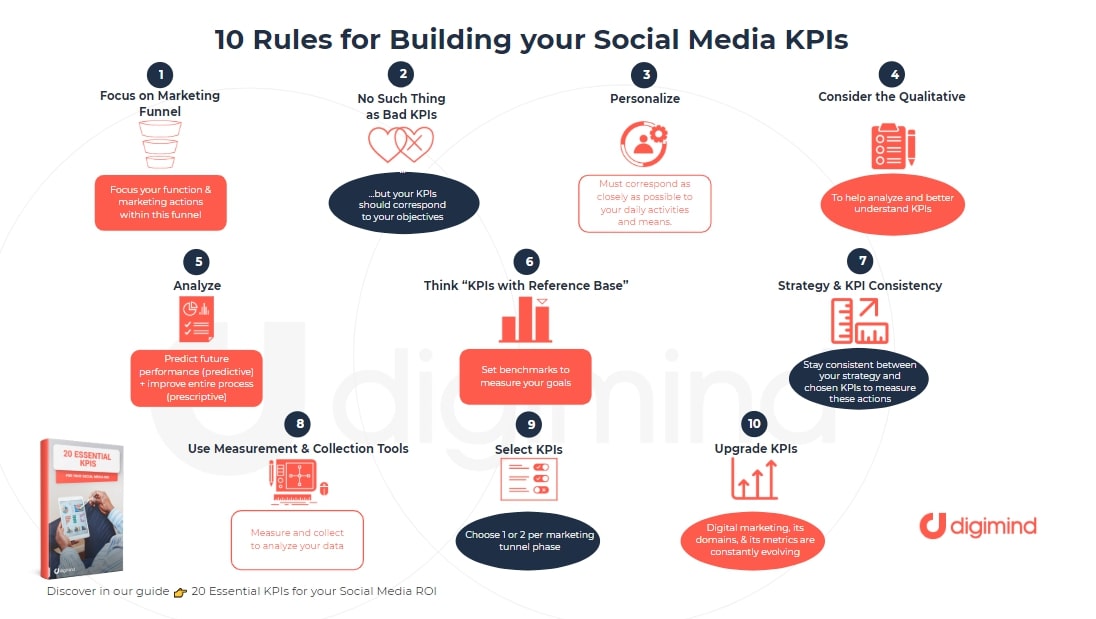
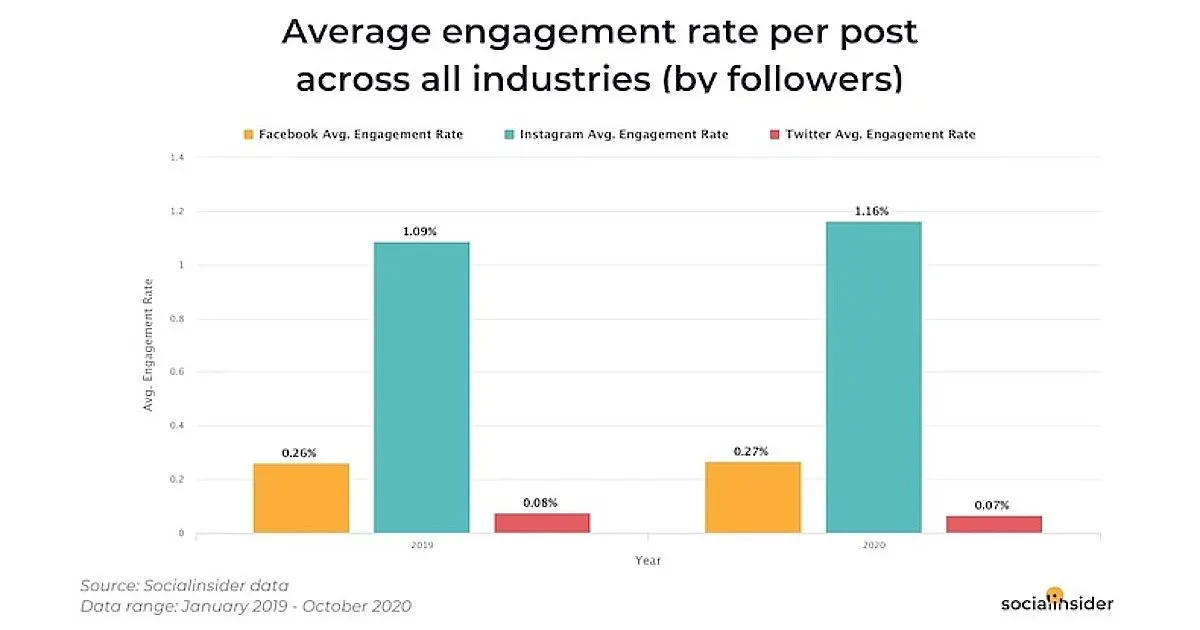
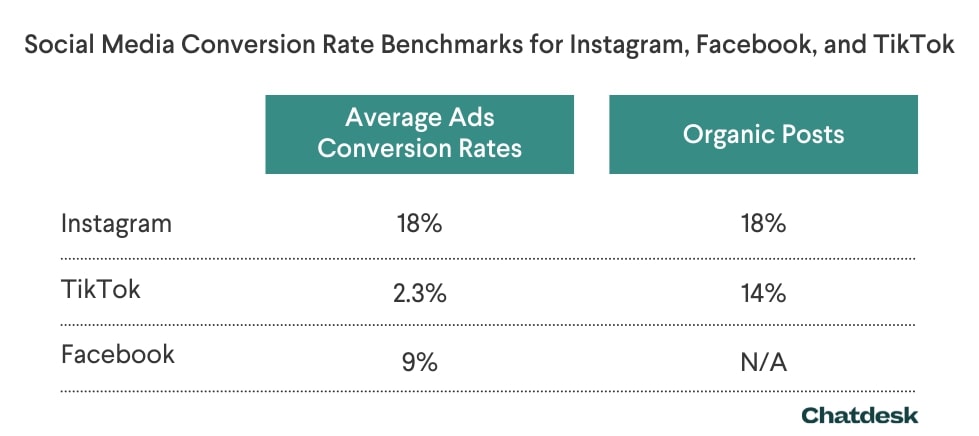
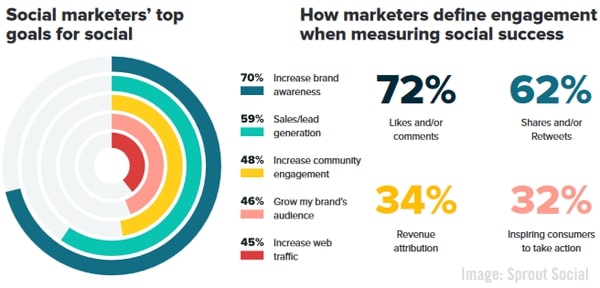
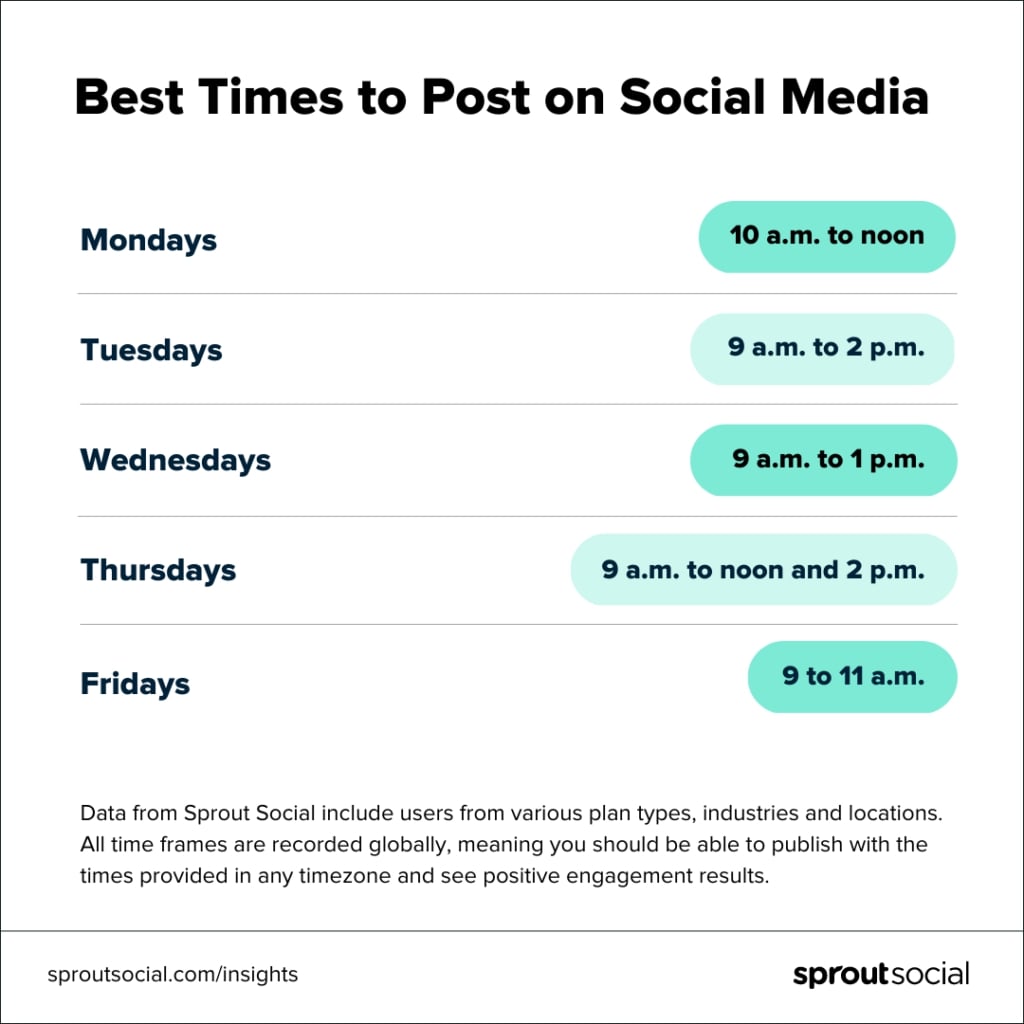




![24 Expert Tips to Optimize Facebook Ads For the Highest ROI [{year}]](https://entail.mayple.com/en-assets/mayple/fit-in/280x280/63c65ea1e0b9310d28fadbb9_FacebookAdsOptimization1_788b2da3ff9beb66a583d5748768f3c4_2000-1699518546646.jpg)
